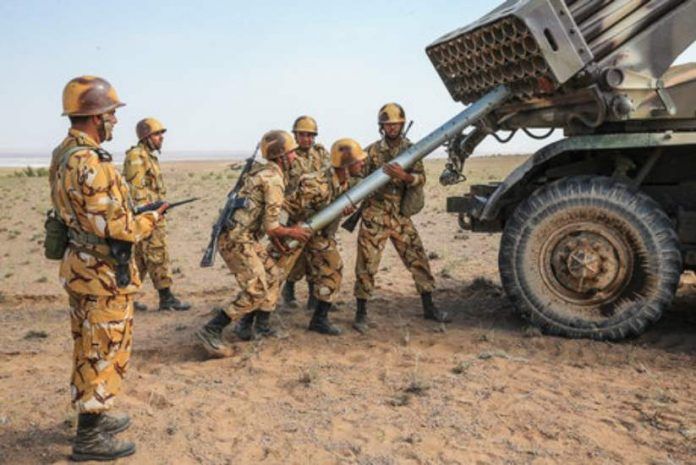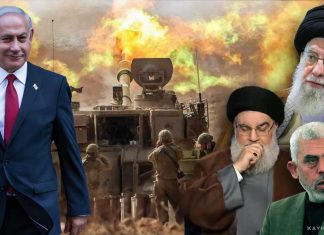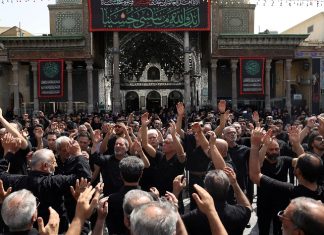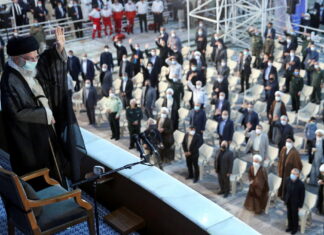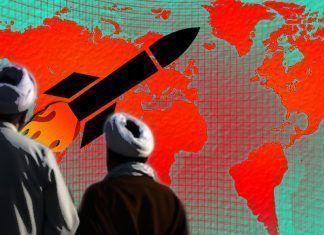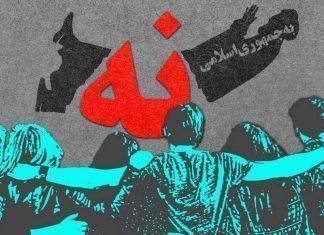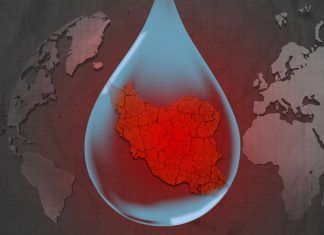Recent comments by several senior army commanders hailing the Iranian Army’s Ground Forces and the Air Force for their roles in the 1979 Islamic Revolution, the Iran-Iraq War (1980-88) and in the fight against the Islamic State of Iraq and the Levant (ISIS) have restarted rumors about the increasing tensions between the regular army and the Islamic Revolutionary Guards Corps (IRGC).
Speaking at a ceremony honoring the mothers and wives of the fallen soldiers held on February 6 in Tehran, the commander of the Islamic of Iran Army Ground Forces (NEZAJA) Brigadier General Kiumars Heydari praised the army units that guard Iran’s borders for protecting the country’s territorial integrity and maintaining security.
“The country owes so much to the brave soldiers who guard our borders against any attack, protect our national security and make us feel safe,” Commander Heydari was quoted by the Mehr News Agency as saying. “We hope to pass on the banner that we have inherited from the martyrs to future generations of young people.”
While inspecting the army’s Training Center-01 a few days earlier on February 1, Heydari had praised the army for its role in combating ISIS.
“Iran has the fifth most powerful active ground forces of the army in the world. We should all be proud of this,” Heydari was quoted by the Tasnim news agency as saying. “During the fight with Daesh, we set up army bases in Iraqi Kurdistan, 40 kilometers from the Iranian border, where we stopped them from advancing any further. The artillery units of the ground forces gave support and confidence to our soldiers. The artillery units are ready to go to battle at any time.”
By highlighting the regular army’s revolutionary and battle credentials, Heydari was perhaps reminding the public and the country’s leadership that the ground and air forces had fought as hard if not harder than the IRGC and the Qods Force, which have always tried to take all credit for various military campaigns in the past 40 years, particularly that of combating and defeating ISIS.
Until recently, the commanders of the Army Ground Forces and the Air Force had been conspicuously silent on the role of the army in the 1979 Revolution, the Iran-Iraq War, and the fight against ISIS until recently. They had also hardly mentioned the IRGC-QF’s role in driving ISIS away from Iranian borders.
[aesop_image img=”https://kayhanlife.com/wp-content/uploads/2019/04/2007-11-26T120000Z_622231380_GM1DWRJSQTAA_RTRMADP_3_IRAN-PALESTINIANS.jpg” panorama=”off” credit=”FILE PHOTO: Iran’s Supreme Leader Ayatollah Ali Khamenei (2nd L) inspects the parade by the members of Basij militia part of IRGC (paramilitary volunteer) during a ceremony to mark the Basij day in southern Tehran. Reuters” align=”center” lightbox=”off” captionsrc=”custom” captionposition=”left” revealfx=”off” overlay_revealfx=”off”]
What makes the comments by the army top brass even more significant is that they come in the aftermath of General Soleimani’s death in a targeted U.S. drone attack on Baghdad International Airport on January 3, and the “unintentional” downing of a Ukrainian passenger plane by the IRGC’s ground-to-air missiles near Tehran’s Khomeini International Airport on January 8 which killed all 176 people on board.
Meanwhile, in remarks reported by the Young Journalists Club (YJC) on February 5, the deputy commander of the Iranian Air Force Brigadier General Mehdi Hadian highlighted the close relationships between the regular army and the leaders of the Revolution.
“The Air Force played a crucial role in the 1979 victory because of its shared political and religious values with Imam [Ruhollah] Khomeini [the founder of the Islamic Republic] and the leaders of the Revolution including the [Supreme] Leader [Ayatollah Ali Khamenei]. The Imam also praised the force for its role in defeating [Saddam Hussain’s] Baathist regime,” General Hadian said during a speech at Tehran’s Islamic Alavi Institute to mark Air Force Day. “The Air Force pounded ISIS forces as they advanced towards the border, preventing them from entering Iranian territory.”
The Islamic Republic used the fight against ISIS to justify IRGC’s support for Syrian President Bashar al-Assad, its efforts to strengthen the so-called “Resistance Front” and position its troops closer to the Golan Heights and Israeli borders. The regime insisted that the former commander of the IRGC-QF Lieutenant General Ghasem Soleimani’s military campaigns in Syria and Iraq were aimed at defeating ISIS.
Recent comments by the commanders of the regular army, however, contradict the claims that the IRGC alone fought against ISIS and protected Iran’s borders.
Elsewhere, Canadian lawyers have filed a $1.5 billion class-action lawsuit on behalf of the victims of the Ukrainian passenger plane. The lawsuit names, as the defendants, Mr. Khamenei, the IRGC, the commander of the IRGC Hossein Salami, the Armed Forces of the Islamic Republic of Iran, Chief of Staff for the Armed Forces Major General Mohammad Bagheri, the Commander-in-Chief of the Army Major General Abdolrahim Mousavi and the Commander of the IRGC’s Aerospace Force Brigadier General Ami Ali Hajizadeh.
Despite the lawsuit against its senior commanders, the regular army appears to distance itself from the IRGC while highlighting its role in the 1979 Islamic Revolution, Iran-Iraq War, and the fight against ISIS.
[Translated from Persian by Fardine Hamidi]

